This is the fourth of a new series of interviews with Belmont leaders about their vision for Belmont’s future. Jeffrey North conducted this interview. It has been edited for length and clarity. – Ed. Chris Ryan has served as Belmont’s town planner and director of planning and building (OPB) since September 2023. With more than 30 years of experience in city planning and economic development, Chris has worked at the town, city, county, regional, and state levels in the public sector in at least 10 communities and the New Jersey Meadowlands Commission; the Metropolitan Area Planning Council; and the Central [READ MORE]
Opinion: Belmont Needs Business-Friendly Zoning
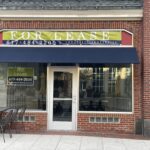
By Taylor Yates and Paul Joy Belmont has zoned itself into a financial corner. Fiscally healthy towns balance their tax bases between commercial and residential real estate, Belmont does not. Belmont receives only 5% of its property tax revenue from commercial real estate, whereas fiscally strong towns receive 20% or more. We receive so little revenue from commercial real estate because the few areas in town where it is allowed suffer from overly burdensome regulation. The Economic Development Committee and Vision 21 Implementation Committee were charged by the Select Board to review Belmont’s zoning bylaws and to look for ways [READ MORE]
Vision for a Better Belmont: Elizabeth Dionne
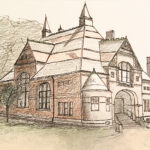
This is the first of a new series of interviews with Belmont stakeholders about their vision for Belmont’s future. This interview was conducted by Jeffrey North. It has been edited for length and clarity. – Ed. BCF: Congratulations on your election to the Select Board earlier this year. What have you learned about how Belmont works—either well or not so well? Overall, having served in an official capacity in Belmont for the past seven-and-a-half years (Town Meeting, Warrant Committee, Community Preservation Committee), I am pleasantly surprised that there are not many surprises. While municipal governance can be daunting and sometimes [READ MORE]
Belmont Embraces MBTA Zoning Challenge
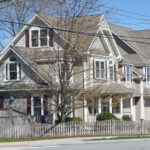
By Rachel Heller and Thayer Donham Belmont residents have yet another great opportunity to shape the future of our community. Under a new state law, Belmont will be creating districts where multifamily housing can be built. The multifamily zoning requirement for MBTA Communities, also known as Section 3A of the Massachusetts Zoning Act, requires municipalities with good access to transit to have zoning in place that allows for up to 15 apartments or condominiums per acre. The Multifamily Zoning Districts must be approved by Town Meeting by December, 31, 2024, and meet the following requirements: Comprise a minimum land area [READ MORE]
Opinion: Parking, People, and Money
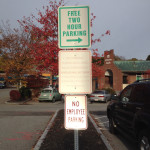
By Max Colice A typical parking space takes up about 300 to 350 square feet. In Belmont, if you want to open a retail business or office, you’ll need one parking space per 250 square feet of retail or office space. That’s right: in Belmont, your parking lot will have to be bigger than your business. If you want to open a restaurant, you’ll need one parking space for every two seats. Again, that’s more land for parking than for people. Providing all of this parking makes opening a business in Belmont more expensive than it should be. Consider how [READ MORE]
Opinion: Belmont Zoning Laws Penalize GR District
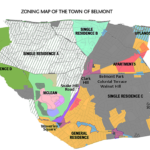
by Chris Arthur The last article I wrote about zoning (“Belmont’s Zoning Needs Rethinking,” BCF Newsletter, January/February 2023) focused on changing the use of “nonconforming” properties so that all properties would have to abide by the same rules, and owners could build to the allowable requirements of the code. I also mentioned changing the code to create a smaller allowable footprint. This article focuses on the unfairness of the existing code to an entire zoning district. Belmont’s zoning map can be found on the town’s website. There are several residential districts. For example, SR-C (Single Residence “C”) and GR [READ MORE]
Belmont’s Zoning Should Reflect Actual Use
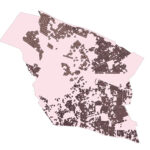
By Max Colice The intensity and use regulations of Belmont’s zoning bylaws don’t reflect how most land in Belmont is actually used. Changing the bylaws to match how land in Belmont has been developed and used would reduce the burden on town officials, promote growth while preserving character, and lead to fairer, more predictable outcomes for homeowners looking to renovate or expand their homes. It would also preserve open space, allow for small-scale development of more affordable housing, and remove obstacles to small-scale commercial development. Belmont’s zoning bylaw divides the town into different zones or districts; it permits varied uses, [READ MORE]
Belmont’s Zoning Needs Rethinking
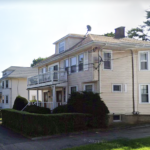
By Chris Arthur The current Belmont zoning bylaw produces inconsistent and haphazard results. It requires vastly different paths to get a permit, and those paths produce vastly different results. Changes to the zoning bylaw can produce more consistency, greater fairness, and be in line with neighboring towns’ zoning bylaws, which have been updated over the past 10 years. Cleaning up the Belmont zoning bylaw to create more consistency and clarity will also help the town’s coffers by reducing the hours that the Belmont Planning staff spend on special permits and Zoning Board of Appeals (ZBA) projects, so that there is [READ MORE]
Letters to the Editor: Belmont Hill Plans, Bike Trails
To the Editor: New England in the fall is renowned for its beauty—the trees are blazes of color, birds, squirrels, and other animals are busily preparing for winter, and the occasional whiff of woodsmoke floats in the air. Driving up Prospect Street, one is met with the pleasant sight of the pristine lawns and stately brick buildings of the Belmont Hill School—a self-described educator of “men of good character,” where “boys are expected to collaborate and become part of something larger than themselves.” Which is why it’s such a shame that the Belmont Hill School is apparently ignoring its own [READ MORE]
MBTA Zoning May Change Belmont
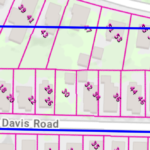
By David Chase Belmont is an MBTA community. A new state law (Section 3A of MGL c. 40A) requires MBTA communities to have at least one zoning district of “reasonable size” and a minimum gross density of at least 15 units per acre within half a mile of commuter rail, subway, ferry, or bus station. The law specifies various formulas based on population and area that attempt to quantify “reasonable.” The zoning district must not have any restrictions that would make it unsuitable for families with children. Belmont must have an Action Plan complete by January 31, 2023, and submit [READ MORE]
Building Booms on Belmont’s Border
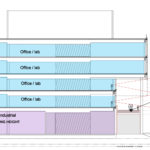
By Meg Muckenhoupt Since aggressively upzoning the Alewife area a decade ago, Cambridge has permitted hundreds of thousands of square feet of new development in the Quadrangle neighborhood adjacent to Belmont, and bordered by Fresh Pond Parkway, Fitchburg line railroad tracks—and Concord Avenue. Now, even more development could solve some long-standing transportation issues, or it could make getting out of Belmont or traveling around the entire Fresh Pond area even more difficult. Why build in the Quadrangle now? Unlike the rest of Cambridge, the Quadrangle has a history of sparse development. Originally one of the lowest-lying areas of the Mystic [READ MORE]
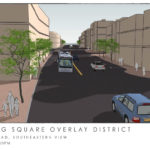
By Meg Muckenhoupt and Virginia Jordan The Bradford development in Cushing Square disrupted Belmont’s streets, sidewalks, planning, and politics, and stressed local businesses over the last decade. Town Meeting adopted a new overlay district in 2006 to channel development and provide the Planning Board with tools to control the scale and look of Cushing Village, now the Bradford, a three-building project comprising 38,000 square feet of ground-floor retail space, 112 residential units on upper floors, and 201 parking spaces. In the past 14 years, the town has learned some lessons about managing large construction projects—and how large construction projects affect [READ MORE]
Arlington Group Opposes Mugar Site Plans
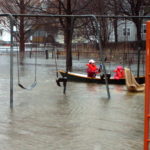
By Meg Muckenhoupt The Mugar wetlands are 17.7 acres of open land in East Arlington. Oaktree Development has proposed constructing a 207-unit apartment complex and six duplex townhouses on this site, to be renamed Thorndike Place. The Coalition to Save the Mugar Wetlands opposes building on the site, which is bordered by Route 2, Thorndike Field, and Dorothy, Edith, and Burch Streets. The following interview with Clarissa Rowe, one of the founders of the Coalition to Save the Mugar Wetlands, was edited for length and clarity. Why is the Mugar site important? I think the reason Arlington and Belmont residents [READ MORE]
20 Years of Belmont Traffic
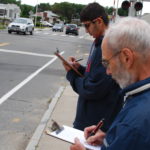
By Sumner Brown Belmont has turned a corner about how we think of traffic. Twenty years ago, our hope was to find ways to make it easier for cars and trucks to pass through Belmont. Now our objective is to protect residential streets from rush-hour traffic and make life easier for pedestrians and bicyclists. The Belmont Citizens Forum has played a part in our traffic turnaround. In 2002, the Belmont Citizens Forum’s Planning and Zoning Committee brainstormed about Trapelo Road. They thought about bike lanes and lots of trees. The committee engaged graduate student classes at MIT and the Boston [READ MORE]
The BCF’s Origin
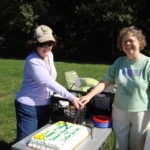
By Sue Bass This is the 20th anniversary of the Belmont Citizens Forum Newsletter; the organization was founded a little over 20 years ago. How did that happen, and why? In 1995, McLean Hospital began exploring publicly how to turn part of its 238-acre campus into cash. Psychiatric drugs had revolutionized mental health care; instead of long walks and fresh country air, medicine could prescribe quicker-acting treatment. McLean no longer needed a bucolic campus, and families relying on health insurance could no longer pay for it. The hospital was $40 million or more in debt. This was not the first [READ MORE]
What is the Future of McLean’s Open Land?
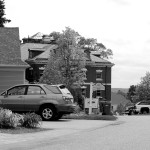
By Sue Bass Piece by piece, the remaining open land in Belmont is being protected—or developed. The Belmont Uplands were bulldozed. The town’s last farm has been saved, protected by Lydia Ogilby and her family with an agricultural restriction. A dozen houses are filling what used to be two six-acre estates off Concord Avenue on Belmont Hill. But nearby open space is covered by conservation restrictions, thanks to descendants of the Claflin-Atkins family that once farmed the land, particularly the late Anne Allen. The fate of two major open areas remains undetermined. Officers of the Belmont Country Club insist that [READ MORE]

